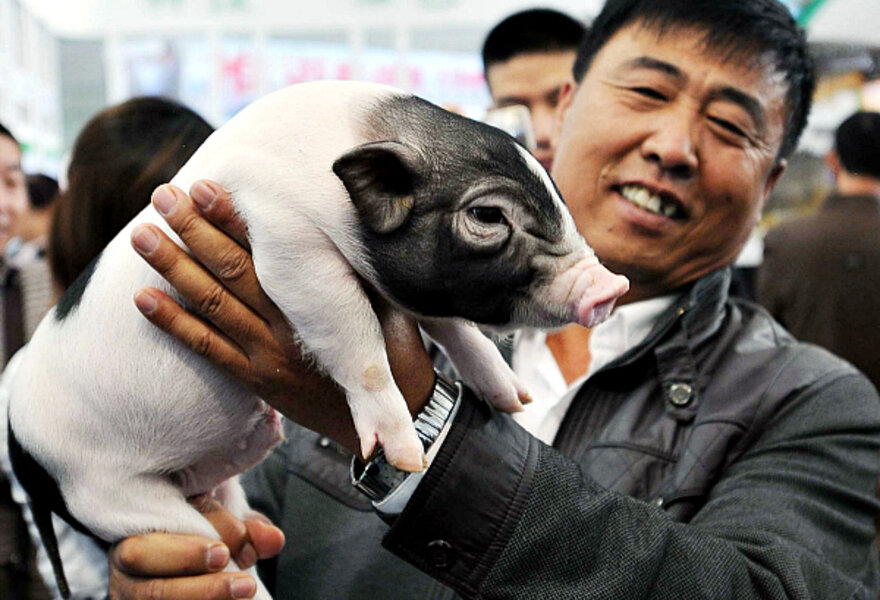Pork without a pig? Meat from a lab could be the answer.
Loading...
The most expensive piece of meat in the world – costing about “US $12,000 per kilo” (2.2 pounds) – does not come from a ranch but a laboratory. The meat is grown in vitro, without killing a living animal.
The material required for in vitro meat is gathered by “a relatively harmless muscle biopsy from a pig, cow, sheep, chicken,” says Nicola Jones, author of a recent article on in vitro meat. From this extracted muscle tissue, researchers separate myosatellite cells, which are adult stem cells used to grow and repair the animal’s muscles after exercise or injury.
Stem cells are important to this process because they can self-divide and multiply their numbers to create a mass of cells where there once was only one. These myosatellite cells are incubated in a petri dish with a substance designed to cause cell division and provide nutrients for muscle growth.
Yet the practice has not quite caught up to the theory. There are a number of hurdles that scientists must overcome before large-scale growth can occur.
“The myosatellite cells will divide only a limited number of times,” according to Jones, making it difficult to produce high volumes of meat.
Mark Post, a physiology professor at Eindhoven University of Technology in the Netherlands, for example, has been unable to produce enough meat to make a single sausage, which will “require another year of research and at least $250,000”.
Additionally, the muscles atrophy without the animal to exercise them naturally. Post describes the meat he has produced as “weak and without texture.” Although researchers are forbidden from tasting their creations, Post describes a TV journalist who stealthily ate a piece and described it as “chewy and tasteless.” The price and taste of in vitro meat must be dramatically improved before artificial meat is “even remotely competitive with current products,” says Post.
Despite lacking feasibility for large-scale production, in vitro meat inspires excitement because it is an alternative to status quo meat production, which is increasingly viewed as ecologically unsustainable.
Modern meat production causes many forms of “environmental degradation,” says a report published in Environmental Health Perspectives (EHP). The report continues, “meat production contributes disproportionately to these problems, in part because feeding grain to livestock to produce meat – instead of feeding it directly to humans – involves a large energy loss.”
A New York Times article estimates that “two to five times more grain is required to produce the same amount of calories through livestock as through direct grain consumption.” Despite this inefficient trade-off, “roughly one third of grain is consumed by domestic animals,” says Joel Cohen, professor of population studies at Columbia University.
By not requiring food, in vitro meat frees up grain resources, which reaps “environmental benefits” and “benefits against world starvation,” according to Post.
What do you think? Will lab-grown meat help nourish the planet? Tell us in the comments.
• Grant Potter is a development associate and executive assistant to the president of Worldwatch.
• To purchase your own copy of "State of the World 2011: Innovations that Nourish the Planet," please click HERE. And to watch the one-minute book trailer, click HERE.
• This article originally appeared at Nourishing the Planet, a blog published by the Worldwatch Institute.





